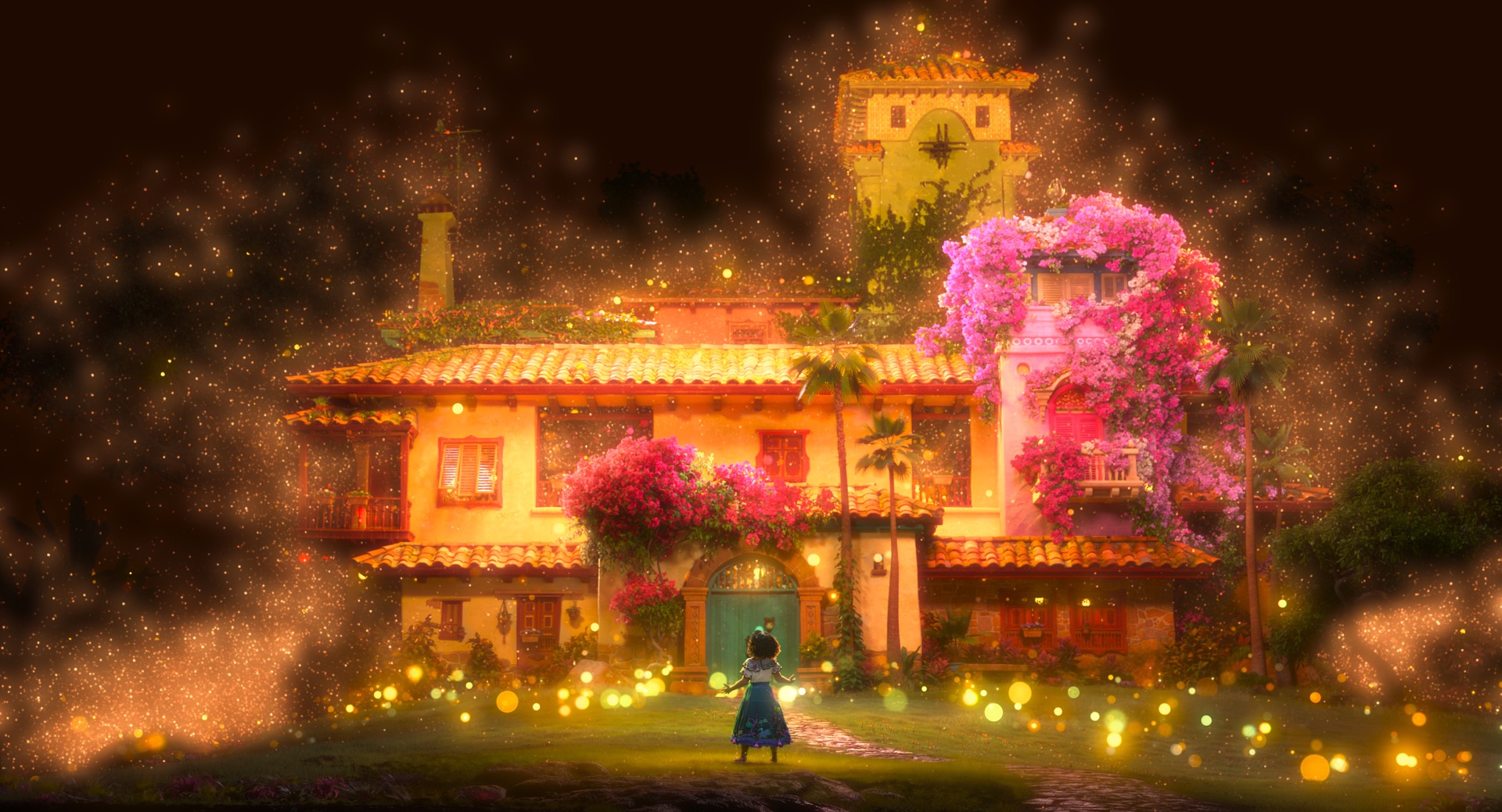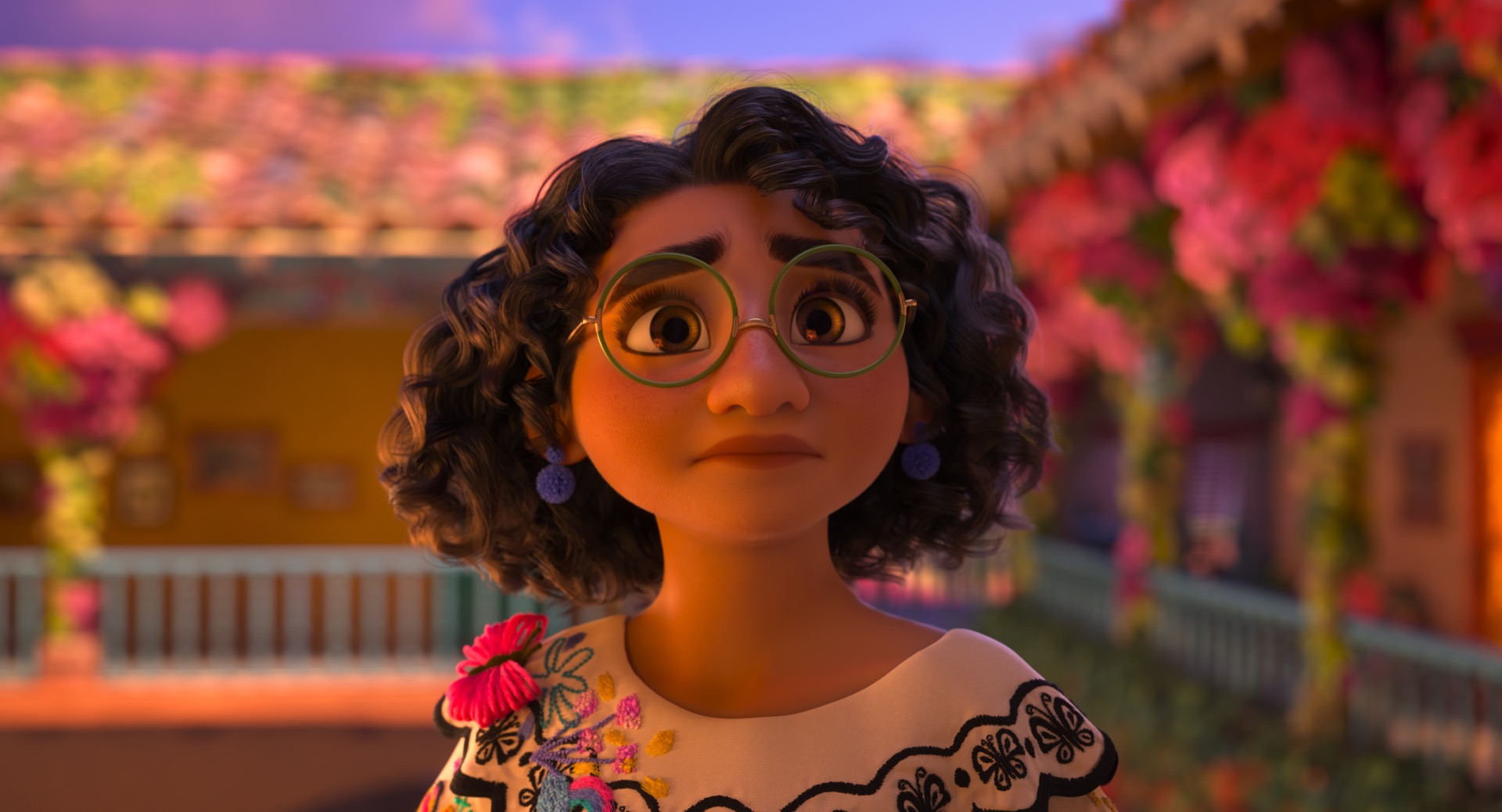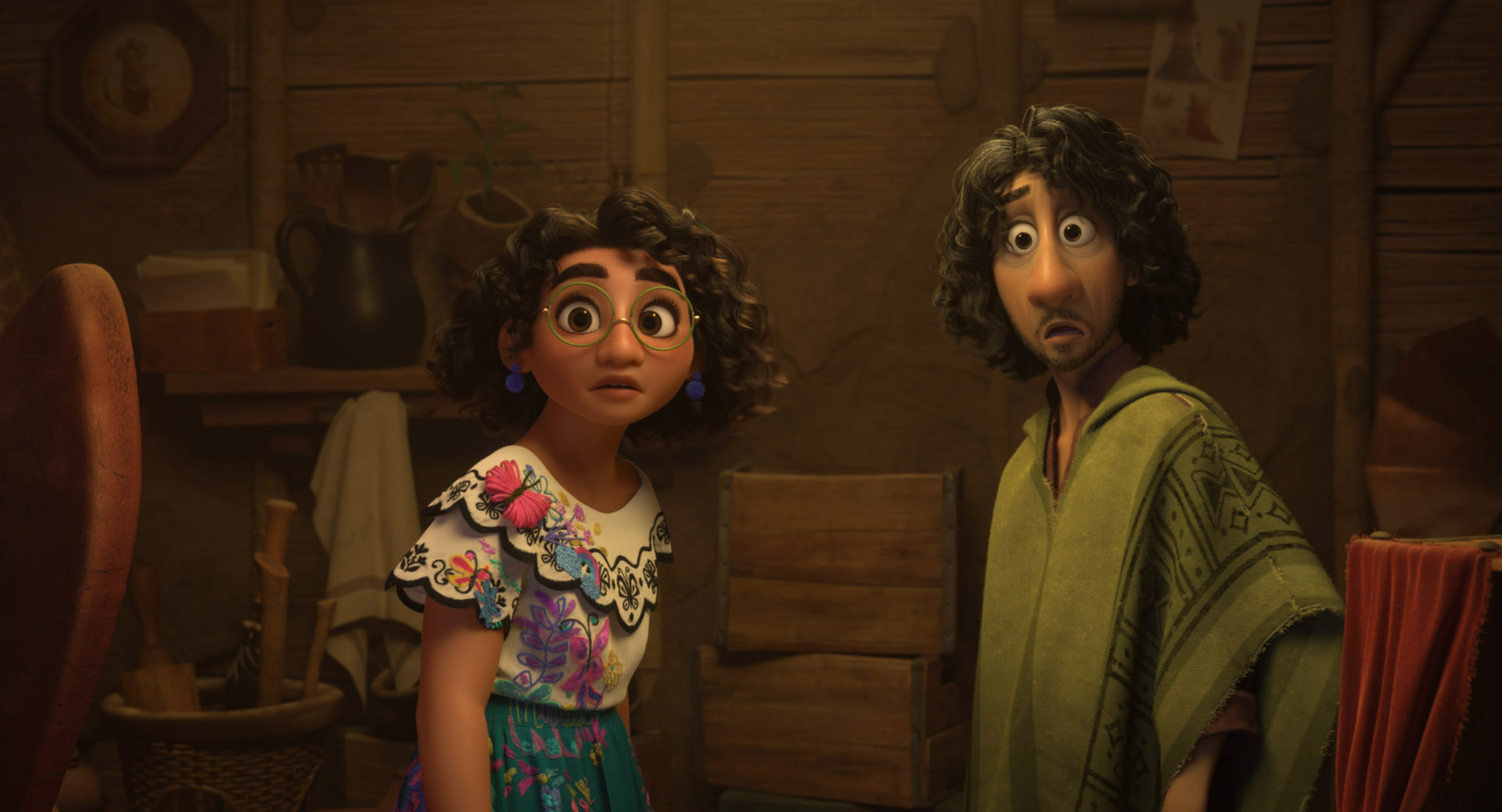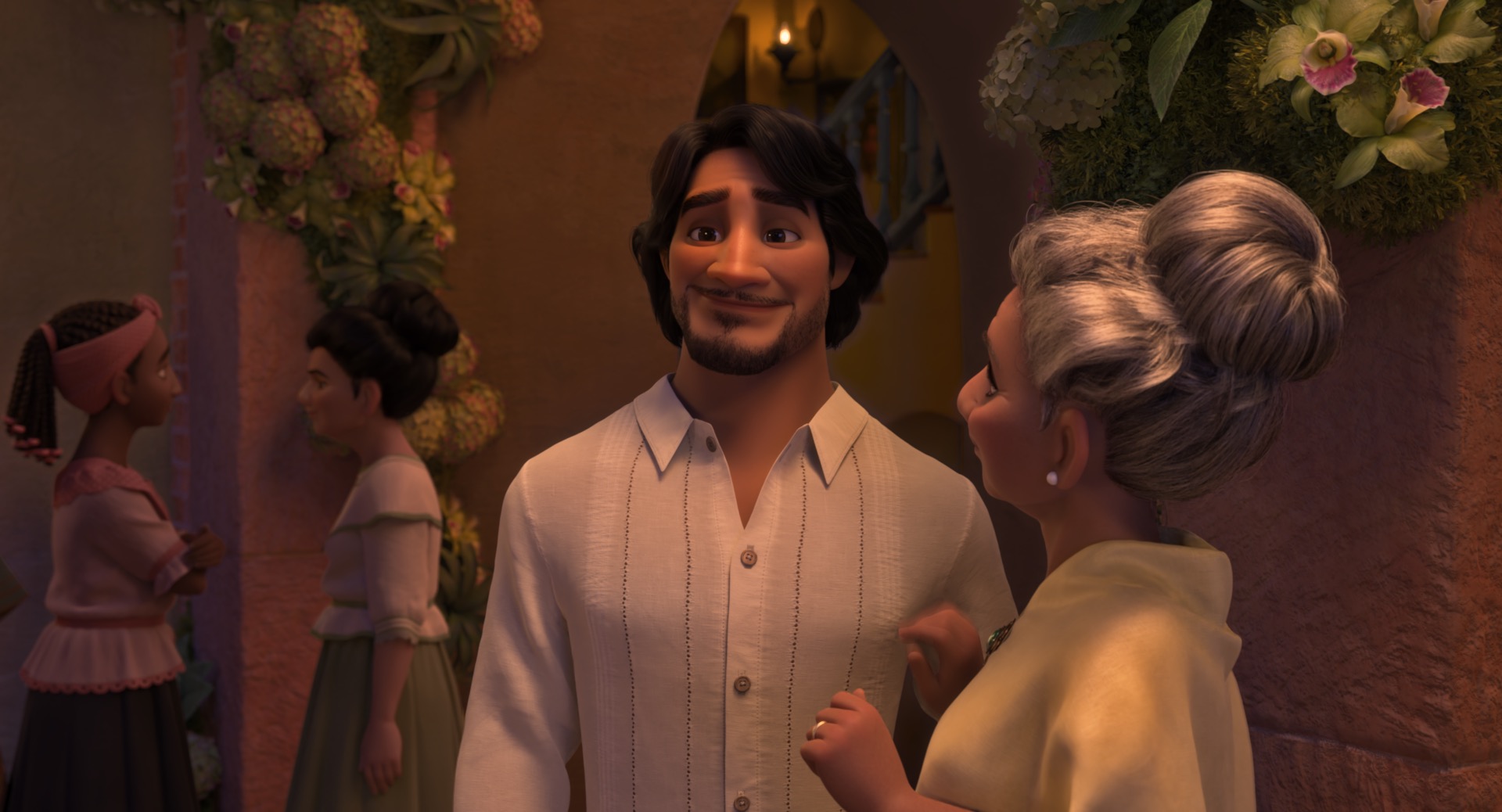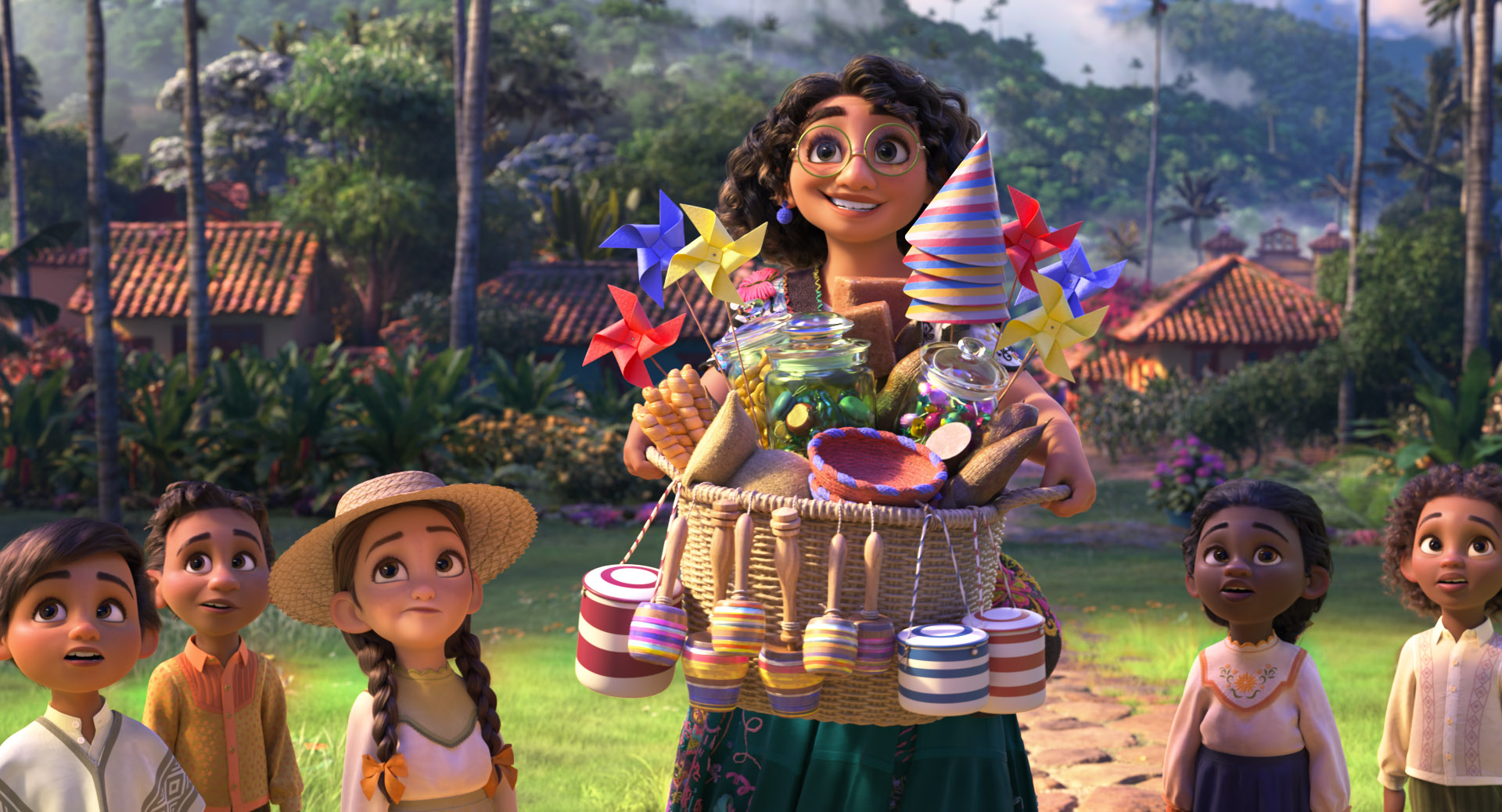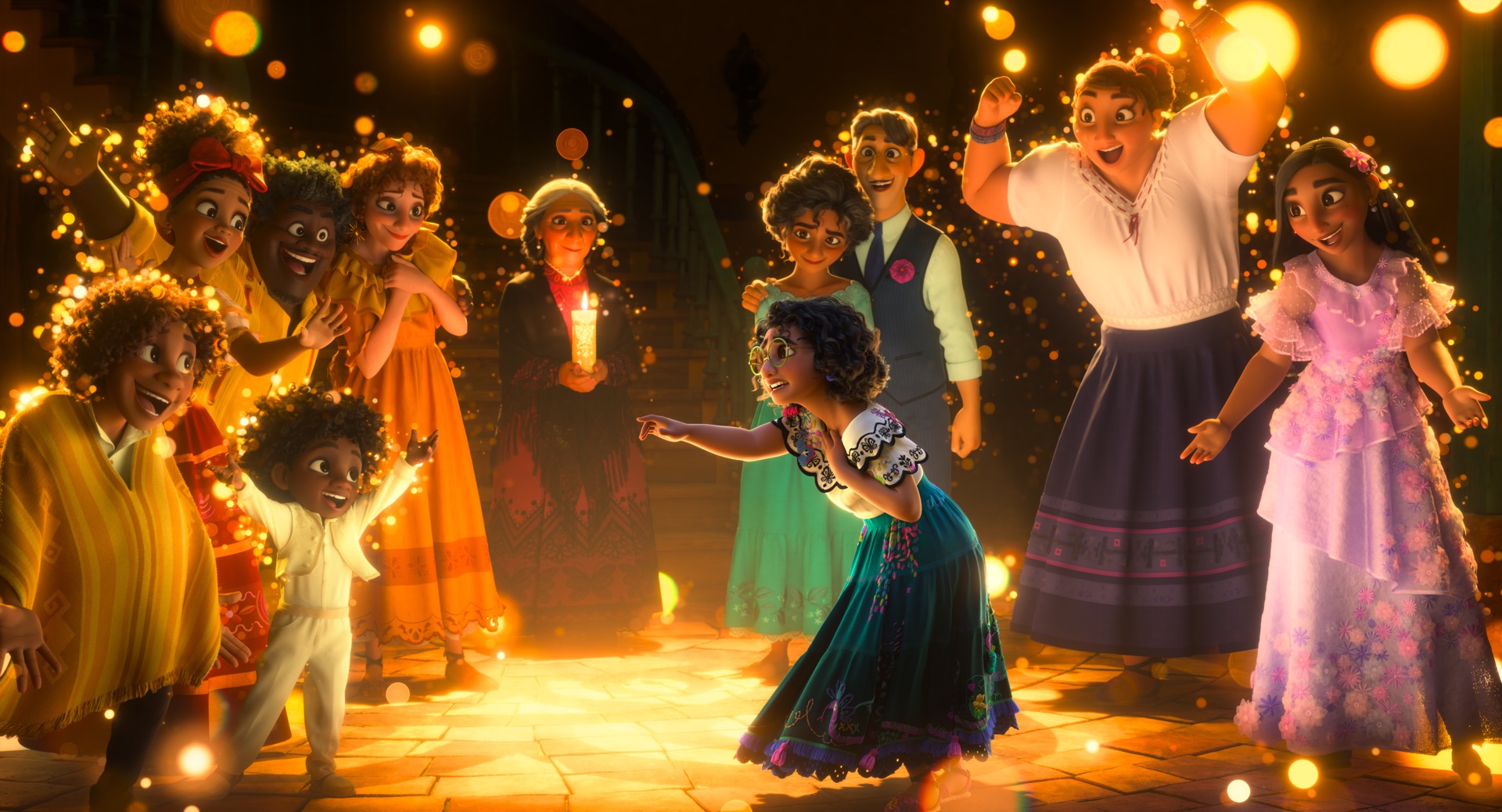Encanto
For the first time since 2016, Walt Disney Animation Studios is releasing not just one animated feature in a year, but two! The second Disney Animation release of 2021 is Encanto, which marks a major milestone as Disney Animation’s 60th animated feature film. Encanto is a musical set in Colombia about a girl named Mirabel and her family: the amazing, fantastical, magical Madrigals. I’m proud of every Disney Animation project that I’ve had the privilege to work on, but I have to admit that this year was something different and something very special to me, because this year we completed both Raya and the Last Dragon and Encanto, which are together two of my favorite Disney Animation projects so far. Earlier this year, I wrote about the amazing work that went into Raya and the Last Dragon and why I loved working on that project; with Encanto now in theaters, I now get to share why I’ve loved working on Encanto so much as well!
Disney Animation feature films take many years and hundreds of people to make, and often the film’s story can remain in a state of flux for much of the film’s production. All of the above isn’t unusual; large-scale creative endeavors like filmmaking often entail an extremely complex and challenging process. More often than not, a film requires time and many iterations to really find its voice and gain that spark that makes it a great film. Encanto, however, is a film that a lot of my coworkers and I realized was going to be really special very early on in production. Now obviously, that hunch didn’t mean that making Encanto was easy by any means; every film requires tons of hard work from the most amazing, inspiring, talented artists and engineers that I know. But, I think in the end, that initial hunch about Encanto was proven correct: the finished Encanto has a story that is bursting with warmth and meaning, has one of Disney Animation’s best main characters to date with a huge cast of charming supporting characters, has the most beautiful, magical animation and visuals we’ve ever done, and sets all of the above to a wonderful soundtrack with a bunch of catchy, really cleverly written new songs. Both the production process and final film for Encanto were a strong reminder for me of why I love working on Disney Animation films in the first place.
From a technical perspective, Encanto also represents something very special in the history of Disney Animation’s continual advancements in animation technology. To understand why this is, a very brief history review about Disney Animation’s modern production pipeline and toolset is helpful. In retrospect, Disney Animation’s 50th animated feature film, Tangled, was probably one of the most important films the studio has ever made from a technical perspective, because the production of Tangled required a near-total ground-up rebuild of the studio’s production pipeline and tools that wound up laying the technical foundations for Disney Animation’s modern era. While every film we’ve made since Tangled has seen us make enormous technical strides in a variety of eras, the starting point of the production pipeline we’ve used and evolved for every CG film up until Encanto were put into place during Tangled. The fact that Encanto is Disney Animation’s 60th animated feature film is therefore fitting; Encanto is the first film made using the successor to the production pipeline that was first built for Tangled, and just like how Tangled laid the technical foundations for the subsequent ten films that followed, Encanto lays the technical foundations for many more future films to come! As presented in the USD Birds of a Feather session at SIGGRAPH 2021, this new production pipeline is built on the open-source Universal Scene Description project and brings massive upgrades to almost every piece of software and every custom tool that our artists use. An absolutely monumental amount of work was put into building a new USD-based world at Disney Animation, but I think the effort was extremely worthwhile: thanks to the work done on Encanto, Disney Animation is now well set up for another decade of technical innovation and another decade of pushing animation as a medium forward. I’m hoping that we’ll be able to present much more on this topic at SIGGRAPH 2022!
Moving to a new production pipeline meant also moving Disney’s Hyperion Renderer to work in the new production pipeline. To me, one of the biggest advantages of an in-house production renderer is the ability for the renderer development team to work extremely closely with other teams in the studio in an integrated fashion, and moving Hyperion to work well in the new USD-based world exemplifies just how important this collaboration is. We couldn’t have pulled off this effort without the huge amount of amazing work that engineers and TDs and artists from many other departments pitched in. However, having to move an existing renderer to a new pipeline isn’t the only impact on rendering that the new USD-based world has had. One of the most exciting things about the new pipeline is all of the new possibilities and capabilities that USD and Hydra unlocks; one of the biggest projects our rendering team worked on during Encanto’s production was a new, very exciting next-generation rendering project. I can’t talk too much about this project yet; all I can say is that we see it as a major step towards the future of rendering at Disney Animation, and that even in its initial deployment on Encanto, we’ve already seen huge fundamental improvements to how our lighters work every day. Hopefully we’ll be able to reveal more soon!
Of course, just because Encanto saw huge foundational changes to how we make movies doesn’t mean that there weren’t the usual fun and interesting show-specific challenges as well. Encanto presented many new, weird, fun problems for the rendering team to think about. Geometry fracturing was a major effect used extensively throughout Encanto, and in order to author and render fractured geometry as efficiently as possible, the rendering team had to devise some really clever new geometry-processing features in Hyperion. Encanto’s cinematography direction called for a beautiful, really colorful look that required pushing artistic controllability in our lighting capabilities even further, and to that end our team developed a bunch of cool new artistic control enhancements in Hyperion’s volume rendering and light shaping systems. One of my favorite show-specific challenges that I got to work on for Encanto was for the holographic effect in Bruno’s emerald crystal prophecies. For a variety of reasons, the artists wanted this effect done completely in-render; coming up with an in-render solution required many iterations and prototypes and experiments carried out over several months through a close collaboration between a number of artists and TDs and the rendering team. Encanto also saw continued advancements to Hyperion’s state-of-the-art deep-learning denoiser and stereo rendering solutions and saw continued advancements in Hyperion’s shading models and traversal system. These advancements helped us tackle many of the interesting complexity and scaling challenges that Encanto presented; effects like Isabella’s flowers and the glowing magical particles associated with the Madrigal family’s miracle pushed instancing counts to incredible new record levels, and for the first time ever on a Disney Animation film, we actually rendered some of the gorgeous costumes in the movie not as displaced triangle meshes with fuzz on top, but as actual woven curves at the thread-level. The latter proved crucial to creating the chiffon and tulle in Isabella’s outfit and was a huge part in creating the look of Mirabel’s characteristic custom-embroidered skirt. My mind was thoroughly blown when I saw those renders for the first time; on every film, I’m constantly amazed and impressed by what our artists can do with the tools we provide them with. Again, I’m hoping that we’ll be able to share much more about all of these things later; keep an eye on SIGGRAPH 2022!
Encanto also saw rendering features that we first developed for previous films pushed even further and used in interesting new ways. We first deployed a path guiding implementation in Hyperion back on Frozen 2, but path guiding wound up not seeing too much use on Raya and the Last Dragon since Raya’s setting was mostly outdoors, and path guiding doesn’t help as much in direct-lighting dominant scenarios such as outdoor scenes. However, since a huge part of Encanto takes place inside of the magical Madrigal casita, indoor indirect illumination was a huge component of Encanto’s lighting. We found that path guiding provided enormous benefits to render times in many indoor scenes, and especially in settings like the Madrigal family’s kitchen at night, where lighting was almost entirely provided by outdoor light sources coming in through windows and from candles and stuff. I think this case was a great example of how we benefit from how closely our lighting artists and our rendering engineers work together on many shows over time; because we had all worked together on similar problems before, we all had shared experiences with past solutions that we were able to draw on together to quickly arrive at a common understanding of the new challenges on Encanto. Another good example of how this collaboration continues to pay dividends over time is in the choices of lens and bokeh effects that were used on Encanto. For Raya and the Last Dragon, we learned a lot about creating non-uniform bokeh and interesting lensing effects, and what we learned on Raya in turn helped further inform early cinematography and lensing experiments on Encanto.
In addition to all of the cool renderer development work that I usually do, I also got to take part in something a little bit different on Encanto. Every year, the lighting department brings on a handful of trainees, who are put through several months of in-studio “lighting school” to learn our tools and pipeline and approach to lighting before lighting real shots on the film itself. This year, I got to join in with the lighting trainees while they were going through lighting training; this experience wound up being one of my favorites from the past year. I think that having to sit down and actually learn and use software the same way that the users have to is an extraordinarily valuable experience for any software engineer that is building tools for users. Even though I’ve been working at Disney Animation for six years now, and even though I know the internals of how our renderer works extensively, I still learned a ton from having to actually use Hyperion to light shots and address notes from lighting supervisors and stuff! Encanto’s lighting style required really leaning on the tools that we have for art-directing and pushing and modifying fully physical lighting, which really changed my perspective on some of these tools. For most rendering engineers and researchers, features that allow for breaking purely physical light transport are often seen as annoying and difficult to implement but necessary concessions to the artists. Having now used these features in order to hit artistic notes on short time frames though, I now have a better understanding of just how critical a component these features can be in an artist’s toolbox. I owe a huge amount of thanks to Disney Animation’s technology department leadership and to the lighting department for having made this experience possible and for having strongly supported this entire “exchange program”; I’d strongly recommend that every rendering engineer should go try lighting some shots sometime!
Finally, here are a handful of stills from the movie, 100% created using Disney’s Hyperion Renderer by our amazing artists. I’ve ordered the frames randomly, to try to prevent spoiling anything important. These frames showcase just how gorgeous Encanto looks, but since they’re pulled from only the marketing materials that have been released so far, they only represent a small fraction of how breathtakingly beautiful and colorful the total film is. Hopefully I’ll be able to share a bunch more cool and beautiful stills closer to SIGGRAPH 2022. I highly recommend seeing Encanto on the biggest screen you can; if you are a computer graphics enthusiast, go see it twice: the first time for the wonderful, magical story and the second time for the incredible artistry that went into every single shot and every single frame! I love working on Disney Animation films because Disney Animation is a place where some of the most amazing artists and engineers in the world work together to simultaneously advance animation as a storytelling medium, as a visual medium, and as a technology goal. Art being inspired by technology and technology being challenged by art is a legacy that is deeply baked into the very DNA of Disney Animation, and that approach is exemplified by every single frame in Encanto:
All images in this post are courtesy of and the property of Walt Disney Animation Studios.
Also, be sure to catch our new short, Far From the Tree, which is accompanying Encanto in theaters. Far From the Tree deserves its own discussion later; all I’ll write here is that I’m sure it’s going to be fascinating for rendering and computer graphics enthusiasts to see! Far From the Tree tells the story of a parent and child raccoon as they explore a beach; the short has a beautiful hand-drawn watercolor look that is actually CG rendered out of Disney’s Hyperion Renderer and extensively augmented with hand-crafted elements. Be sure to see Far From the Tree in theaters with Encanto!

